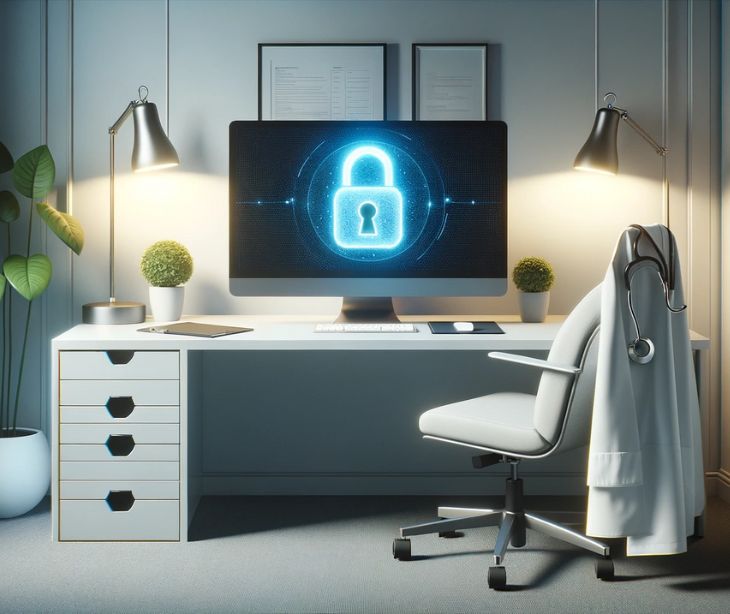
Access control is a central part of the HIPAA Security Rule, which requires that healthcare providers implement technical policies and procedures that allow only authorized persons to access electronic protected health information (ePHI). Just in time access fits this requirement by ensuring that healthcare personnel access patient data only when necessary for treatment or operations, and only for as long as needed.
What is just in time access?
According to a conference paper published in Proceedings of the 5th International Conference on Intelligent User Interfaces, “Traditional information retrieval systems have become the cornerstone of information access on the Internet (e.g., [2, 14, 191) and virtually all other settings in which people access information via the computer. Such systems process requests in the form of query consisting of natural language search terms, and provide the user with a list of links to those documents the system determines are relevant to the query.”
Just in time access is a security feature that allows medical staff to only see patient data when they need it for treatment. This system boosts security by limiting the window of opportunity for data to be exposed unnecessarily. Here’s how it works: if a doctor is treating a patient, just in time access will unlock the necessary patient information for that specific treatment and lock it back up as soon as the doctor is done. This minimizes the risk of sensitive information being accessed by someone who doesn’t need it.
In a sector where patient privacy is needed, this method is particularly useful. This is especially true in circumstances like emergency treatment situations or specific medical consultations, where only relevant information is made available to healthcare providers. It keeps patient data more secure and helps doctors and nurses focus on what's needed without getting distracted by irrelevant details.
The application of just in time access in healthcare
One of the most its most effective applications in healthcare is in emergency departments. In these high pressure environments, healthcare providers need immediate access to patient information to deliver prompt and effective treatment. Just in time access is incredibly beneficial here because it allows emergency room personnel to quickly obtain the necessary patient data without sifting through irrelevant details.
Here’s how it works: When a patient arrives in an emergency room, the medical staff can immediately access only the most relevant information, such as the patient's medical history, allergies, and current medications, directly related to the emergency at hand. This system uses smart authentication methods, like biometric identifiers, to ensure that only authorized personnel involved in the patient's immediate care have access. Once the emergency treatment is complete, access to the patient's information is automatically revoked.
See also: A guide to HIPAA and access controls
How to apply just in time access in a healthcare setting
- Dynamic access control systems: Deploy dynamic access control systems that evaluate the context of a user's request in real time. These systems can assess factors such as the user’s location (e.g., accessing from within the hospital vs. remotely), time of access, and the specific task or patient involved before granting access.
- Behavioral analytics: Make use of behavioral analytics to learn normal access patterns for each user or role. The system can then detect anomalies in real time and restrict access if unusual behavior is detected.
- Zero trust architecture: Implement a zero trust security model, which assumes that all users, even those inside the organization’s network, could be potential threats.
- Automated provisioning and de-provisioning: Automate the process of provisioning and de-provisioning access. This involves setting up systems that automatically grant access when it is initially needed—such as when a healthcare provider is assigned to a patient—and automatically revoking access when it is no longer required, or when the provider’s relationship with the patient ends.
- Use of biometric authentication: Implement biometric authentication methods, such as fingerprint scanners or facial recognition technology, to ensure that access to sensitive information is granted only to authenticated and authorized individuals.
- Geofencing technology: Apply geofencing technology to restrict access to patient information based on the physical location of the user. For instance, access could be allowed only within the secured areas of a hospital, and blocked when the user is outside these areas.
- Session management: Enforce strict session management policies. Automatically log users out of sensitive systems after a period of inactivity or immediately after completing the necessary tasks.
- Granular access permissions: Develop an access matrix that defines extremely specific access levels for different types of data within the patient records. For example, a physiotherapist may only access physical therapy records and not psychiatric or other medical records unless explicitly required.
See also: HIPAA Compliant Email: The Definitive Guide
FAQs
What is role-based access control?
RBAC is a security protocol where access rights are granted to users based on their role within an organization.
What is the Security Rule?
The Security Rule is a part of HIPAA that mandates the protection of ePHI by requiring physical, administrative, and technical safeguards.
What is an alternative to just in time access?
An alternative to just in time access is continuous access control.
Subscribe to Paubox Weekly
Every Friday we'll bring you the most important news from Paubox. Our aim is to make you smarter, faster.



